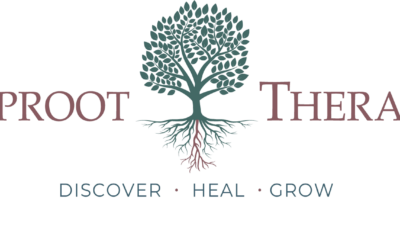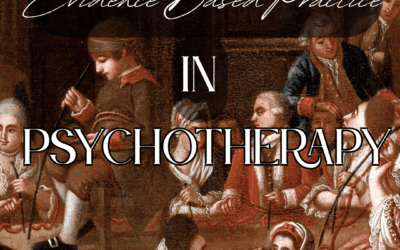
What is Somatic and Experiential Therapy?
Experiential therapy modalities, such as Internal Family Systems (IFS), Lifespan Integration (LI), Hakomi, AEDP, Psychodrama, and Gestalt therapy, are often considered “non-manualizable” approaches to therapy. This means that they do not follow a specific set of predetermined steps or techniques that can be applied to all clients in the same way. Instead, these modalities require the clinician to rely on their intuition and creativity to adapt the therapy to the individual needs and experiences of each client.
I have written quite a bit about how experiential and somatic therapies are the pathway to the subcortical brain and the best way to release trauma. Several people have asked what kinds of modalities we use at Taproot other than EMDR and brainspotting. There are several modalities we use as inspiration and borrow the techniques from. We don’t have formal certifications in these techniques were it is even available, but we are knowledgeable about the history and literature of these techniques. Eclectic and integrative therapists take inspiration from many writers and psychologists to develop their own unique style.
In experiential therapy, the client is considered to be the expert on their own experiences and emotions. The therapist’s role is to create a safe and supportive environment for the client to explore and express these experiences, rather than imposing a particular approach or technique onto them. This means that the client is in charge of the therapeutic process, and the therapist serves as a guide or facilitator, rather than a “fixer” who has all the answers.
Experiential therapy modalities often involve a range of techniques, such as mindfulness practices, guided visualization, and experiments, that encourage the client to engage with their emotions and explore their thoughts and behaviors in a more profound and meaningful way. However, the specific techniques used in each session are tailored to the individual needs and experiences of the client, and the therapist must rely on their intuition and creativity to guide the therapeutic process.
This focus on intuition and creativity in experiential therapy can be challenging for clinicians who are used to more manualized approaches to therapy. However, it is also what makes experiential therapy so powerful and effective for many clients. By focusing on the individual needs and experiences of each client, and by empowering the client to take charge of the therapeutic process, experiential therapy can help clients gain greater insight into their emotions and behaviors, develop greater self-awareness, and achieve lasting personal growth and healing.
Here is a list of some experiential therapy modalities our clinicians might borrow techniques from at Taproot Therapy Collective.
Types of Experiential Therapies
Internal Family Systems (IFS) Therapy:
Developed by Richard Schwartz, IFS therapy focuses on understanding and addressing the various “parts” of a person’s psyche that can be in conflict with one another. Techniques used in IFS include guided visualization, dialogue with internal parts, and mindfulness practices. In an IFS session, the therapist helps the client explore and communicate with their various internal parts to facilitate healing and integration.
Lifespan Integration (LI):
Created by Peggy Pace, LI is a technique that uses visualization to help clients resolve traumas from their past. In a LI session, the client is guided through a series of visualizations of significant moments in their life, starting with birth and moving forward. The therapist helps the client integrate their memories and emotions in a safe and supportive environment.
Hakomi Therapy:
Developed by Ron Kurtz, Hakomi therapy is a mindfulness-based approach that focuses on exploring a client’s beliefs, memories, and emotions to uncover the root causes of their current issues. Techniques used in Hakomi include mindfulness practices, guided visualization, and experiments that test the client’s beliefs and assumptions. In a Hakomi session, the therapist helps the client develop greater self-awareness and insight into their thought patterns and behaviors.
Accelerated Experiential Dynamic Psychotherapy (AEDP):
Developed by Diana Fosha, AEDP is an approach that emphasizes the importance of emotional connection and expression in healing. Techniques used in AEDP include mindfulness practices, visualization, and somatic experiencing. In an AEDP session, the therapist helps the client explore and express their emotions in a safe and supportive environment, fostering greater emotional resilience and well-being.
Psychodrama:
Created by Jacob Moreno, Psychodrama is a form of therapy that uses role-playing and group dynamics to explore and address a client’s emotional issues. In a psychodrama session, the client and other group members take on different roles and act out various scenarios to explore different aspects of the client’s psyche and experiences. The therapist facilitates the process, helping the client gain greater insight into their emotions and behaviors.
Gestalt Therapy:
Developed by Fritz Perls, Gestalt therapy is an experiential approach that emphasizes the importance of the present moment in healing. Techniques used in Gestalt therapy include mindfulness practices, guided visualization, and experiments that encourage the client to explore and express their emotions. In a Gestalt therapy session, the therapist helps the client gain greater awareness of their thoughts, feelings, and behaviors in the present moment, fostering greater self-awareness and personal growth.
How Experiential Therapy is Different:
Overall, experiential therapy modalities focus on creating a safe and supportive environment for clients to explore and express their emotions, gain greater insight into their thought patterns and behaviors, and develop greater self-awareness and emotional resilience. The techniques used in these modalities are designed to facilitate this process, encouraging clients to engage with their emotions in a more profound and meaningful way.
Bibliography:
Ashton, M. (2023). Experiential Therapy Modalities: Beyond the Manual. GetTherapyBirmingham.com.
Davenport, J. (2017). Experiential Therapies. In J. Carlson & S. Dermer (Eds.), The SAGE Encyclopedia of Marriage, Family, and Couples Counseling (pp. 592-596). SAGE Publications.
Fosha, D. (2000). The Transforming Power of Affect: A Model for Accelerated Change. Basic Books.
Kurtz, R. (1990). Body-Centered Psychotherapy: The Hakomi Method. LifeRhythm.
Pace, P. (2003). Lifespan Integration: Connecting Ego States through Time. Lifespan Integration, LLC.
Perls, F. S. (1973). The Gestalt Approach & Eye Witness to Therapy. Science & Behavior Books.
Schwartz, R. C. (1995). Internal Family Systems Therapy. Guilford Press.
Teyber, E., & McClure, F. H. (2010). Interpersonal Process in Therapy: An Integrative Model. Brooks/Cole.
Wampold, B. E. (2015). How Important Are the Common Factors in Psychotherapy? An Update. World Psychiatry, 14(3), 270-277. https://doi.org/10.1002/wps.20238
Further Reading:
Cozolino, L. (2010). The Neuroscience of Psychotherapy: Healing the Social Brain (2nd ed.). W. W. Norton & Company.
Emerson, D., Sharma, R., Chaudhry, S., & Turner, J. (2009). Trauma-Sensitive Yoga: Principles, Practice, and Research. International Journal of Yoga Therapy, 19(1), 123-128. https://doi.org/10.17761/ijyt.19.1.h6476p8084vowu46
Johnson, S. M. (2019). Attachment Theory in Practice: Emotionally Focused Therapy (EFT) with Individuals, Couples, and Families. Guilford Press.
Levine, P. A. (2010). In an Unspoken Voice: How the Body Releases Trauma and Restores Goodness. North Atlantic Books.
Ogden, P., Minton, K., & Pain, C. (2006). Trauma and the Body: A Sensorimotor Approach to Psychotherapy. W. W. Norton & Company.
Siegel, D. J. (2012). The Developing Mind: How Relationships and the Brain Interact to Shape Who We Are (2nd ed.). Guilford Press.
van der Kolk, B. A. (2014). The Body Keeps the Score: Brain, Mind, and Body in the Healing of Trauma. Penguin Books.
Yalom, I. D., & Leszcz, M. (2005). The Theory and Practice of Group Psychotherapy (5th ed.). Basic Books.





0 Comments